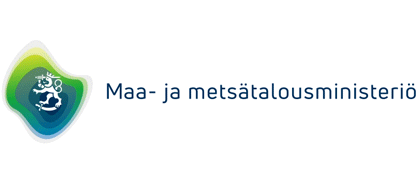UN Sustainable Development Goals: Plant health protects life
.jpg/fddd6c32-f34d-1356-2dff-6248d27acfaa?t=1594212314418&width=1200)
The International Year of Plant Health 2020 declared by the UN is important in terms of the UN Sustainable Development Goals as well. The six goals specifically associated with plant health are: no poverty, zero hunger, decent work and economic growth, responsible consumption, climate action and life on land. Each of these goals concerns each and every person. Healthy plants are the foundation of life.
Goals 1 and 2: No poverty – zero hunger
The objective of the International Year of Plant Health is to enhance people’s awareness of plant health and their ability to recognise what destroys plants: plant diseases and pests. People who are able to identify pests and signs of plant diseases are also able to react fast and prevent damage.
“If we cannot stop pests fast enough, the whole crop may be destroyed and there is no food on the table. Pests that destroy plantations put people’s livelihoods at risk and increase poverty,” Senior Specialist Ralf Lopian says.
Goal 8: Decent work and economic growth
Unfortunately, we have already seen numerous examples of how failure in protecting plant health and spread of pests impacts on work and economic growth. The rapid spread of a plant disease in Italian olive plantations led to severe crop losses and put the farmers’ livelihood at risk.
Forests and timber markets have also suffered from damage caused by pests. These include the destruction of Canadian forests caused by the mountain pine beetle. Forest fires have caused serious damages e.g. in Australia, Russia, Brazil, California and Portugal. Forest damages have also occurred quite close to us, including the extensive forest fires in Sweden in 2018 that destroyed about 25,000 hectares of forest.
“Insects have caused damage in Central Europe as well. Spruce forests have suffered from serious insect damages e.g. in the Czech Republic, Austria and Germany, and these have also caused major disturbances in the international timber market,” Ministerial Adviser Tatu Torniainen says.
Goal 12: Responsible consumption supports plant health
Consumption is also concerned with responsible travel. What responsibility in travelling clearly means in terms of plant health is adequate knowledge related to importing plants and the rules for this.
“A responsible traveller does not import plants and plant products from non-EU countries. Even within the EU one should make sure that only inspected plants are imported. Host plants of fire host plants may only be introduced from the EU if they have a PZ-protected area plant passport. Our plants will stay healthy if we do not bring any pests across the borders,” Head of Plant Health Marja Savonmäki says.
Goal 13: Climate action for plant health
There has been a growing demand for climate action for quite a long time. Climate measures are extremely important for plant health as well. When the message on the impact of climate measures on plant health and food production is fully understood, both the climate and food production will benefit.
“Climate change and the consequent warming climate create favourable conditions for plant pests, which is why action to fight against climate change and concrete climate measures are needed,” says Jaana Husu-Kallio, Permanent Secretary at the Ministry of Agriculture and Forestry.
Goal 15: Life on land
Life on land comprises measures related to the preservation of biodiversity. Besides arable crops, forests are also important in terms of biodiversity and wellbeing. The yield of insect pollinated plants depends on the numbers of pollinating insects. Without pollinators there is no crop.
Increased awareness of the key role of plant health and recognition of what destroys plants are important means to prevent damage in advance and, through this, to preserve biodiversity and adequate food production.
Time to stop and think
The UN International Year of Plant Health 2020 is a good time to stop and think about the true meaning of plant health: What will happen if we do not actively monitor plant health and the threats to it? What would this mean for our forests, arable crops, berries and fruits?
The responsibility for the world we will be leaving to the next generation rests with all of us.
By protecting plants we are protecting life – today and tomorrow!
Read more
• Ministry of Agriculture and Forestry (in Finnish)
• Finnish Food Authority
• International Year of Plant Health



